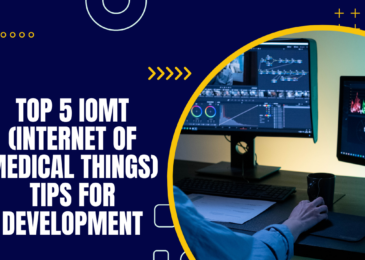There was a time that the manufacturing industry is considered to be a “blue-collar industry.” Times have changed; we’re in a phase where it’s known for embracing new and exciting technological innovations that have been transforming the efficiency, productivity, and safety within the work site.
The use of advanced technologies in manufacturing has opened doors to a lot of changes that you wouldn’t even thought of a few years ago. This results a remarkable improvement in precision, customization, speed, and most of all, efficiency.
Here are the 3 exciting developments in IoT and connected manufacturing technologies.
1. Cloud Computing:
You’re probably aware that cloud computing is becoming a staple in various industries, and it’s having a huge impact in the manufacturing industry as well. Although the manufacturing industry is a little late to embrace such technology because of connectivity and security concerns, this is slowly changing.
IoT is capable of improving connectivity in a plant, while cloud computing ensures that there’s a viable connectivity across several plants. This also means that companies would be capable of sharing various data on a global scale in as little time as possible.
This is very important, especially if the main goal is to reduce production cost and save time. The shared data also go a long way when it comes to improving productivity in the plant.
Furthermore, instead of each processes being delivered, with cloud computing, it’s integrated together across various channels. That means every aspect is being worked on– from inbound inspections, going down to elimination of scrap and rework through screening and analyzation. It’s also now possible to stop possible issues in real time, and that means there wouldn’t be a loss of money nor time at the end.
Even the manufacturing cycle times also improve due to the development of better insights that are readily available through a cloud-based manufacturing intelligence systems. This only proves that with the integration of cloud computing technology in the manufacturing industry, every aspect will begin to enjoy the positive impact it has to offer– this affects the supply chain, ensuring an increase in operational flexibility. JD Edwards Managed Services is one of the best companies that offer cloud-based computing software that could help your company.
2. IoT Technology Would Invade Almost Every Aspect in Manufacturing
The main goal of industrial revolution is to be able to promote better connectivity, and it’s what the Internet of Things promises. Through IoT technology, this goal is taken to a higher level with sensors, humans, and machines working hand in hand. It provides greater connectivity leading to an improvement in communication, better response times, and efficiency.
One great example of this would be manufacturing companies that own various equipment and should meet a certain level of fluid in their system.
To ensure that it wouldn’t drop below the recommended amount, there’s a meter connected to the equipment, and IoT allows the meter to send this data wirelessly. This data is then delivered to computerized maintenance.
There’s also what you call “management systems” that translates a work order whenever the fluid level drops below its ideal amount. This kind of connectivity allows manufacturing facilities to enjoy a decrease in maintenance cost, an improvement in efficiency, and prevent the occurrence of downtime.
3. 3D Printing Continues to Improve:
The world of product design continues to revolutionize, and there aren’t any signs that it’s going to stop any time soon.
As a matter of fact, it has already been making waves in the manufacturing industry, where there’s the ability to design, and even create almost anything you can think of using plastic, metal, and believe it or not, even human tissue! Without a doubt, this is something that’s changing the way we build, and that’s not limited to a certain thing, but almost everything! As they say, the sky is the limit!
Also referred to as “additive manufacturing” by some, 3D printing offers a plethora of benefits that turns this into a wonderful investment.
With the evolution of 3D printing, it has helped in reducing design-to-production times, manufacturing lead times, production of individual and small lot products from equipment and machine to prototypes, production flexibility, and best of all, less wastage.
Though, what really makes 3D printing promising is that there’s still a lot of room for improvement because it’s just new. It’s only going to get better throughout the years, which makes it a wonderful solution.






